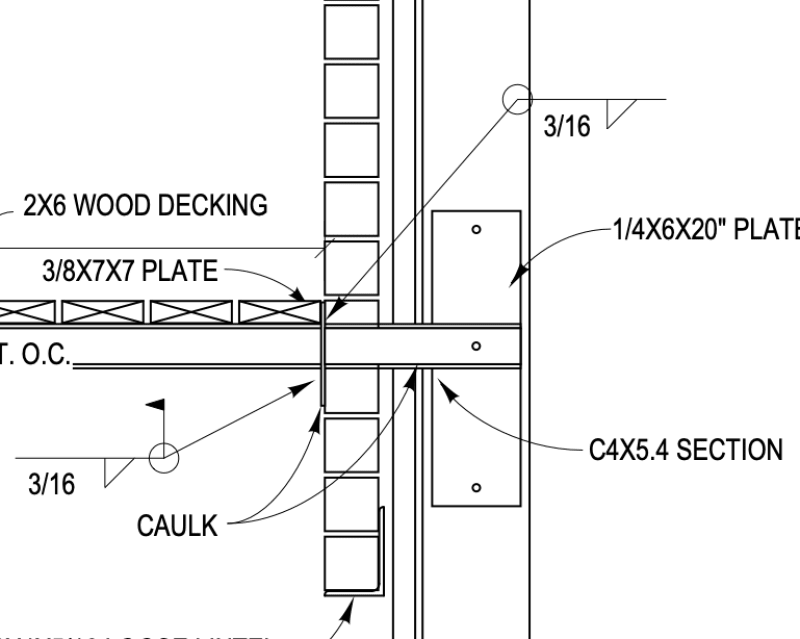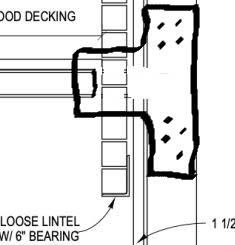XR250 said:
Y'all got any ideas on how I can attach the c-sections to the wall studs and keep water out?
TL

R - NO.
Via a note: Architect/General Contractor shall seal and flash penetration to prevent water ingress per code and workmanlike standards. If caulk or other temporary sealants are employed in that design, Arch/G.C. shall indicate a replacement schedule for these elements.
This kind of detail "leaks" but it's not your thing, your thing is structural life safety. Eventually if the water and rot get bad enough, the connection to the post will weaken or fail, but ... I would expect interior damage to the gypsum board below long before you develop life-safety issues here.
As the drawing shows a beam on the 'free' edge, it may be better to go with a ledger style attachment to the exterior wall.
It would be more conventional to stop the brick above the deck support on a ledger, weep holes, and flash, then have another run of brick below, which probably bears on the foundation below.
As far as feasibility of water-tightness of the original detail, this is a flashing nightmare from the construction defect standpoint. Water will tend to follow the bottom toe of the channel through the wall to the interior, wet the inside of the wall. (Again, under the normal standard of care, this is NOT our job). There's also the thermal transfer issue, this steel through the wall envelope is a heat pipeline, when the steel is cold in the floor/wall cavity, it may condense any water vapor into liquid and you have the "same" problem, water inside the wall. This condition is concealed so difficult to inspect over time and/or maintain, and somebody ELSE should come up with a better plan, i.e. the Arch. (thermal/condensation also NOT a normal element of the standard of care for structural engineering, Architects are the "master builders" after all).
As for a more normal connection, see the FAQ entry for
Load-Tested Deck Ledger attachment (just born).
As it stands, however you decide to math out the connection as-is, just attach an email indicating that you're absolutely not on the hook for any element of water tightness, condensation, hidden decay, rot, deterioration related to water ingress, etc. PDF the email and copy in into your correspondence file in the project folder. I suppose one might consider adding such language to any written contract, if you do written contracts. e.g. "Your dumb idea that can't be effectively flashed or waterproofed is not my responsibility or fault, I do life safety. You agree to indemnify me for any such claims, with no dollar limit."




